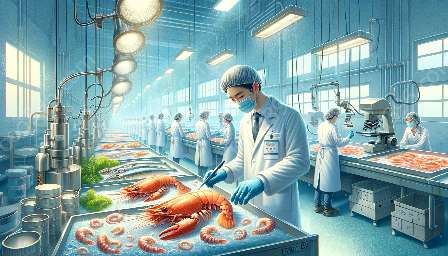Seafood allergies and sensitivities can have a significant impact on individuals, food safety, and sanitation practices. Understanding the science behind these conditions is crucial for ensuring the well-being of consumers and maintaining high standards in the seafood industry.
Seafood Allergies
What are seafood allergies?
Seafood allergies occur when the immune system mistakenly identifies proteins in seafood as harmful substances. This triggers an immune response, leading to a range of symptoms that can vary in severity. Common seafood allergens include proteins found in fish and shellfish such as shrimp, crab, lobster, and clams.
Symptoms of seafood allergies
The symptoms of seafood allergies can range from mild reactions, such as hives and itching, to severe anaphylaxis, a potentially life-threatening condition characterized by throat swelling, difficulty breathing, and a drop in blood pressure. It is important for individuals with seafood allergies to be vigilant about avoiding seafood and seek medical advice in the event of accidental exposure.
Diagnosis and management
Diagnosing seafood allergies involves a combination of medical history, physical examination, and allergen-specific testing. Once diagnosed, individuals must carefully manage their condition by avoiding seafood and carrying emergency medications such as epinephrine injectors to counteract severe reactions.
Seafood Sensitivities
Understanding seafood sensitivities
Unlike allergies, seafood sensitivities do not trigger an immune response. Instead, sensitivities are associated with adverse reactions to certain components in seafood, such as histamine, a compound that can accumulate in improperly stored or spoiled fish. Sensitivity symptoms may include gastrointestinal discomfort, skin reactions, and headaches.
Food safety implications
Seafood sensitivities highlight the importance of proper storage, handling, and sanitation practices within the seafood industry. For example, ensuring that fish is stored at appropriate temperatures and promptly sold or utilized can mitigate the risk of histamine accumulation and related sensitivities.
Seafood Safety and Sanitation
Ensuring seafood safety
Seafood safety and sanitation practices are critical for preventing foodborne illnesses and minimizing the risks associated with seafood allergies and sensitivities. This includes rigorous hygiene protocols, proper storage and transportation, and adherence to regulations and standards set by food authorities.
Managing allergen cross-contamination
Preventing cross-contamination is essential for individuals with seafood allergies. Establishing dedicated preparation areas and equipment for seafood and non-seafood products, as well as thorough cleaning and sanitation procedures, plays a key role in minimizing the risk of allergen exposure.
Seafood Science
Understanding the science of seafood allergies
The science of seafood allergies delves into the molecular and immunological aspects of allergenic proteins present in various seafood species. Advances in this field have led to improved diagnostic tools and potential targeted therapies for managing seafood allergies.
Innovations in allergy research
Research in seafood allergy science includes investigations into hypoallergenic fish breeds and the development of immunotherapies to desensitize individuals with severe seafood allergies. Understanding the underlying mechanisms of seafood allergies is crucial for advancing safety measures and enhancing the quality of life for affected individuals.
Conclusion
Seafood allergies and sensitivities are multifaceted issues that intersect with food safety, sanitation, and scientific research. By gaining a comprehensive understanding of these topics, individuals, healthcare professionals, and seafood industry stakeholders can work collaboratively to address the challenges presented by seafood allergies and sensitivities. Through continued research, education, and diligent safety practices, we can strive to create a safer and more inclusive environment for seafood consumers and the industry as a whole.

